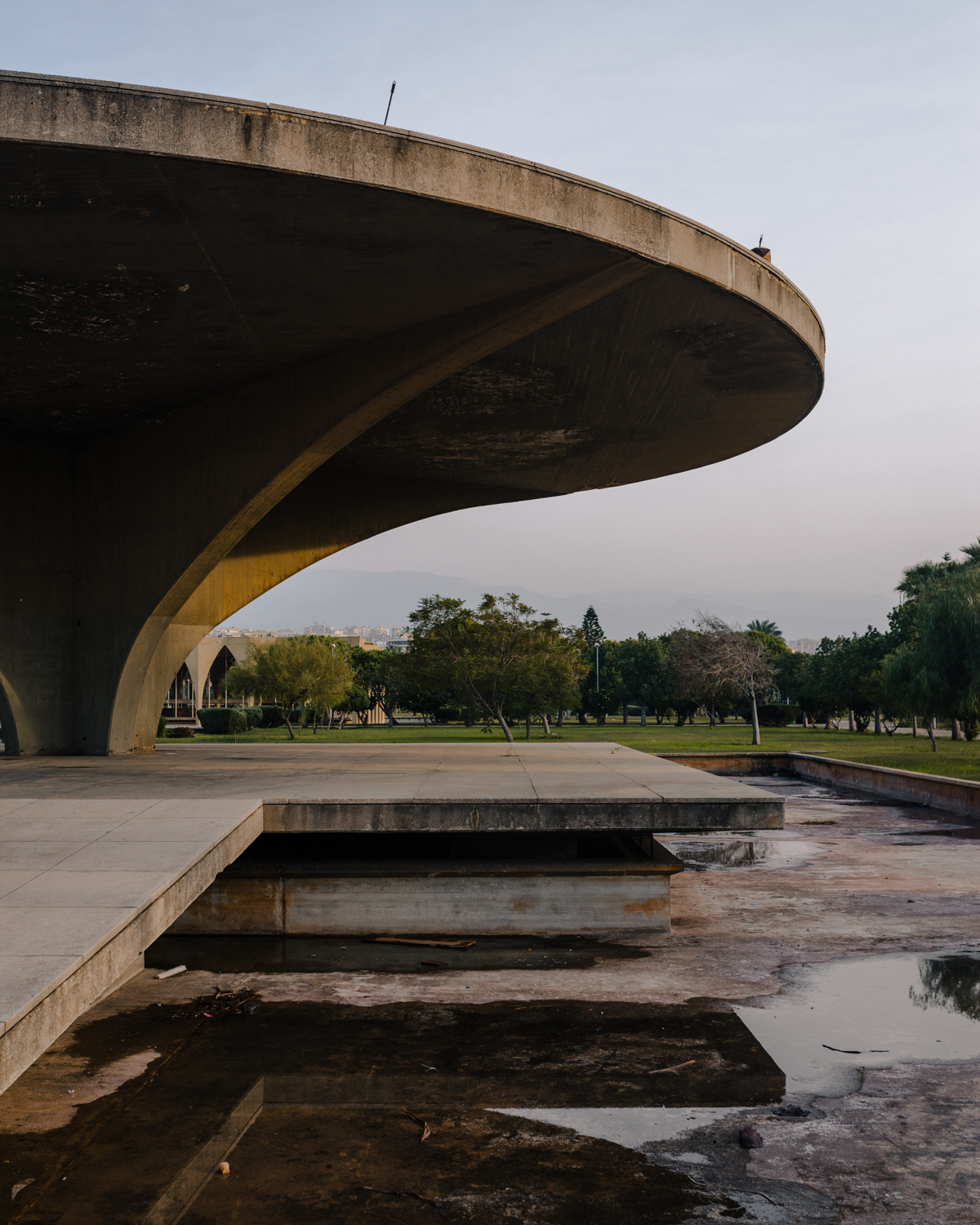Words by Lizzie Porter in Monocle
In the northern Lebanese city of Tripoli, Wassim Naghi climbs the slope leading to the Rashid Karami International Fair’s open-air theatre, picking up lumps of concrete that litter the ground. “You see these pieces?” the architect says. “They fell from the arch in the storm last month. The open-air theatre is the most at-risk of all the structures here.” The chunks have crumbled from a majestic elliptical archway and signal the deteriorating health of one of the Middle East’s nest feats in modernist architecture.
In the northern Lebanese city of Tripoli, Wassim Naghi climbs the slope leading to the Rashid Karami International Fair’s open-air theatre, picking up lumps of concrete that litter the ground. “You see these pieces?” the architect says. “They fell from the arch in the storm last month. The open-air theatre is the most at-risk of all the structures here.” The chunks have crumbled from a majestic elliptical archway and signal the deteriorating health of one of the Middle East’s nest feats in modernist architecture.
Named after Lebanon’s prime minister at the time,
the Rashid Karami International Fair was designed in the
1960s by Brazilian architect Oscar Niemeyer. As newly
independent Arab states shaped their identities, the com-
plex of 28 structures was intended to attract international
interest to Lebanon. But before work on the 70-hectare
site was complete, the country descended into a 15-year-
long civil war. Niemeyer’s comely concrete complex never
opened. A massive boomerang-shaped exhibition hall was
supposed to welcome trade from all over the world but
never truly fulflled its function.













